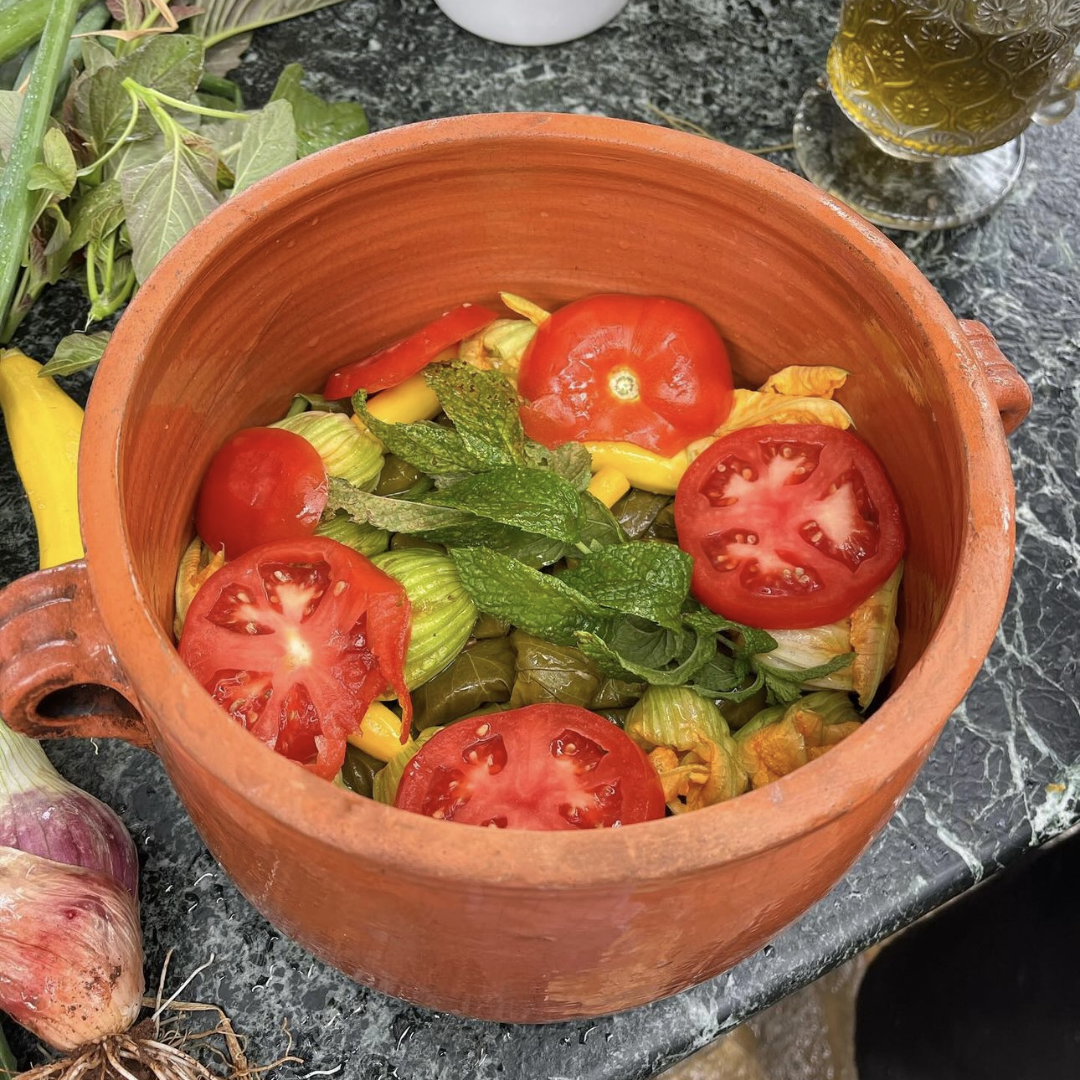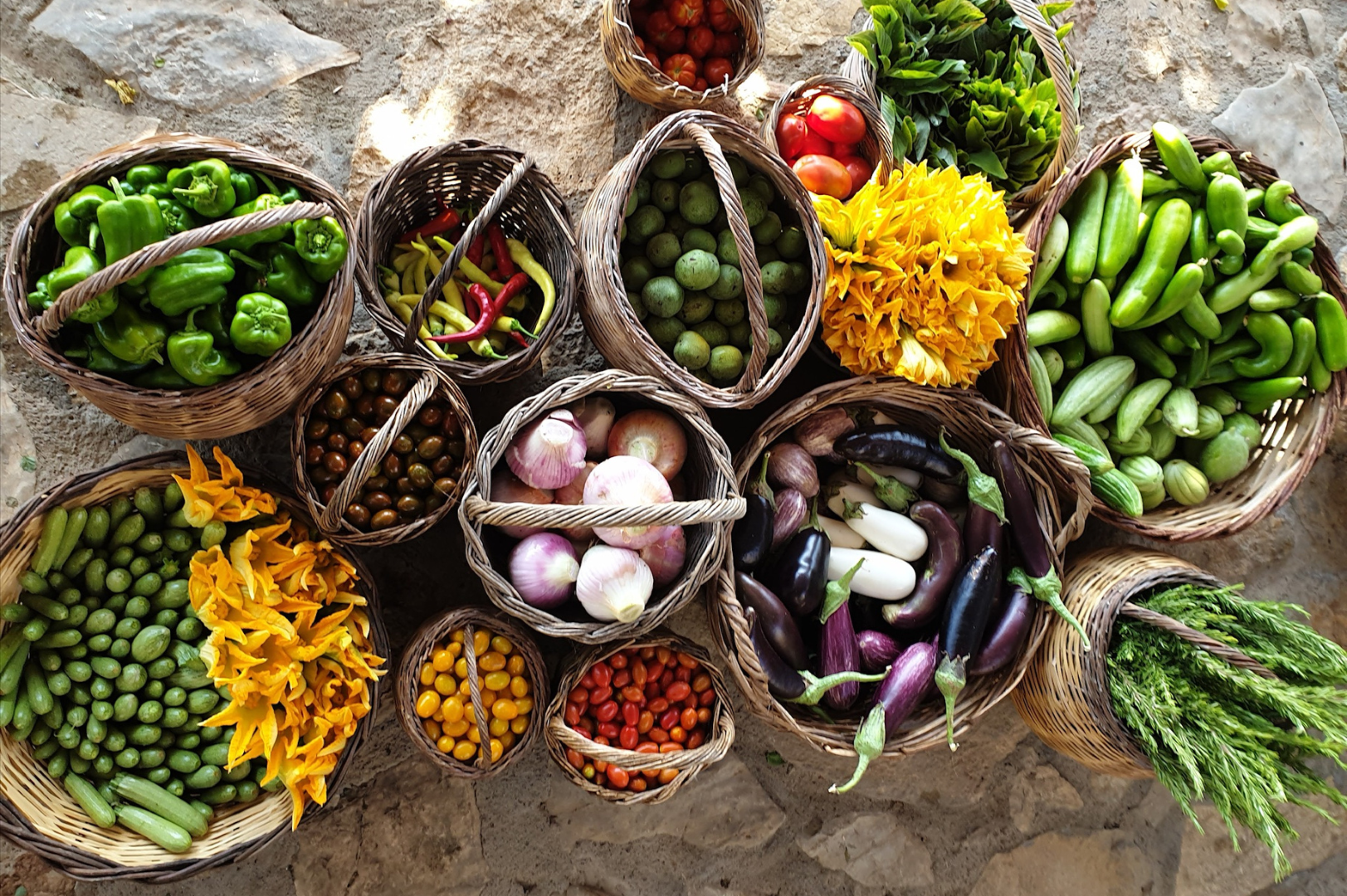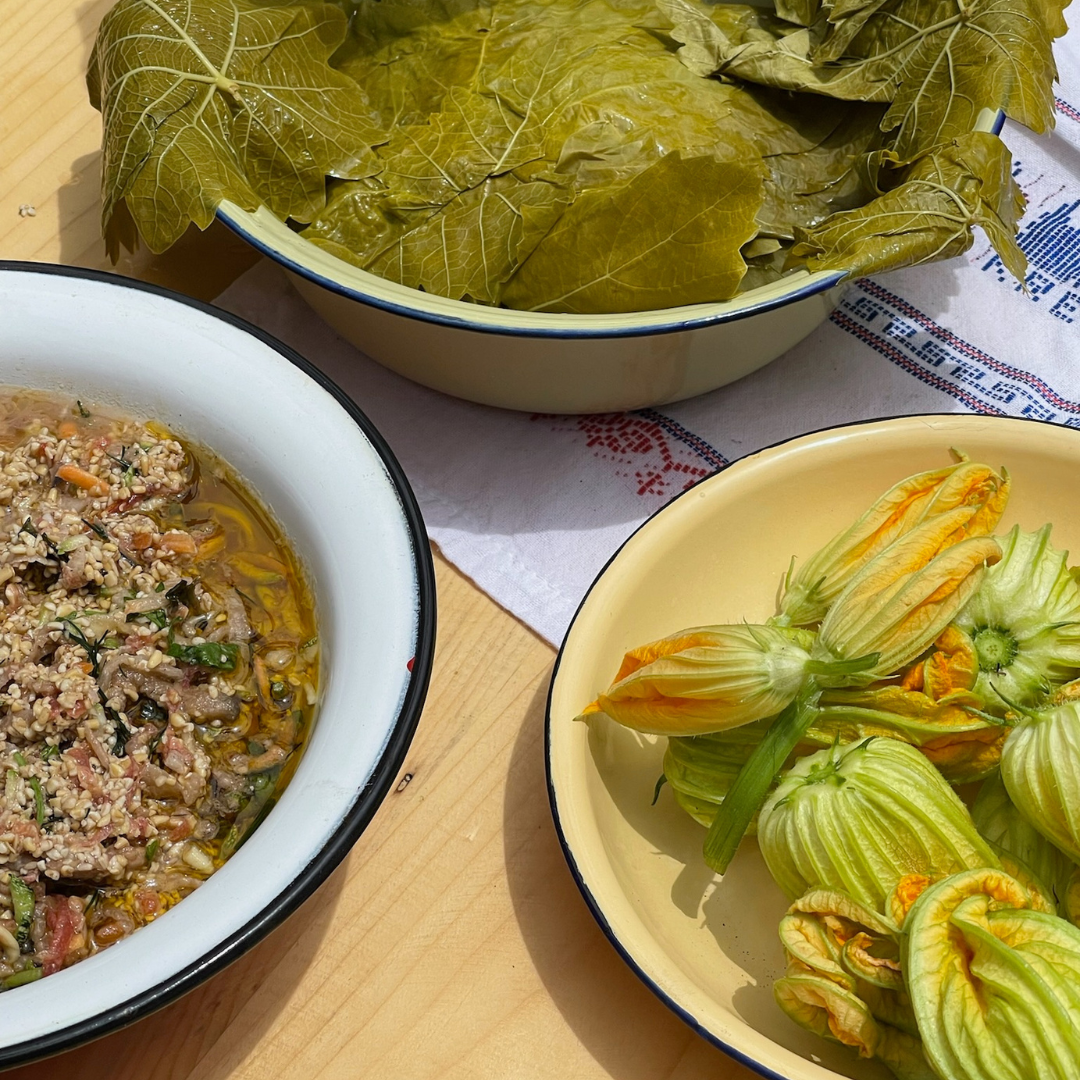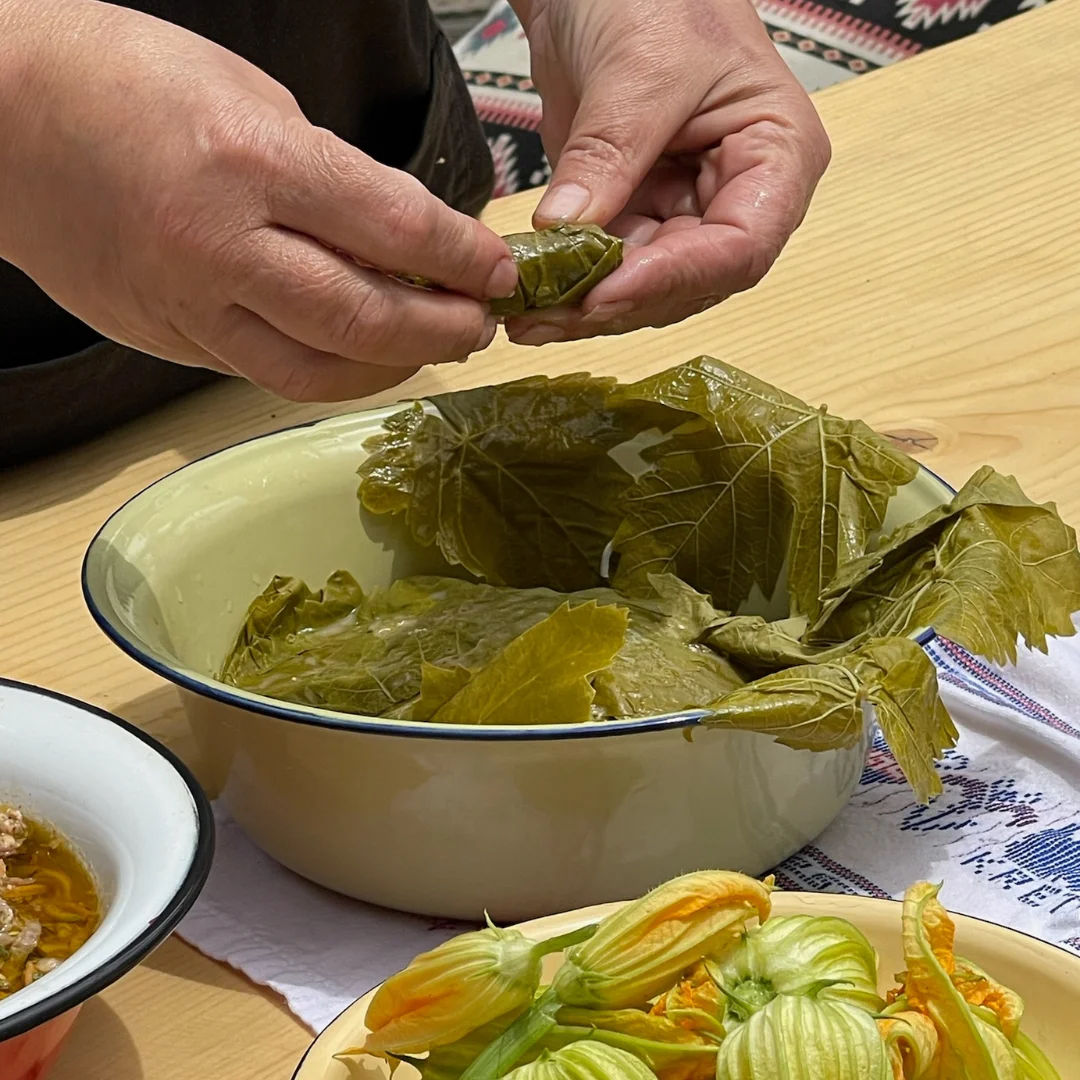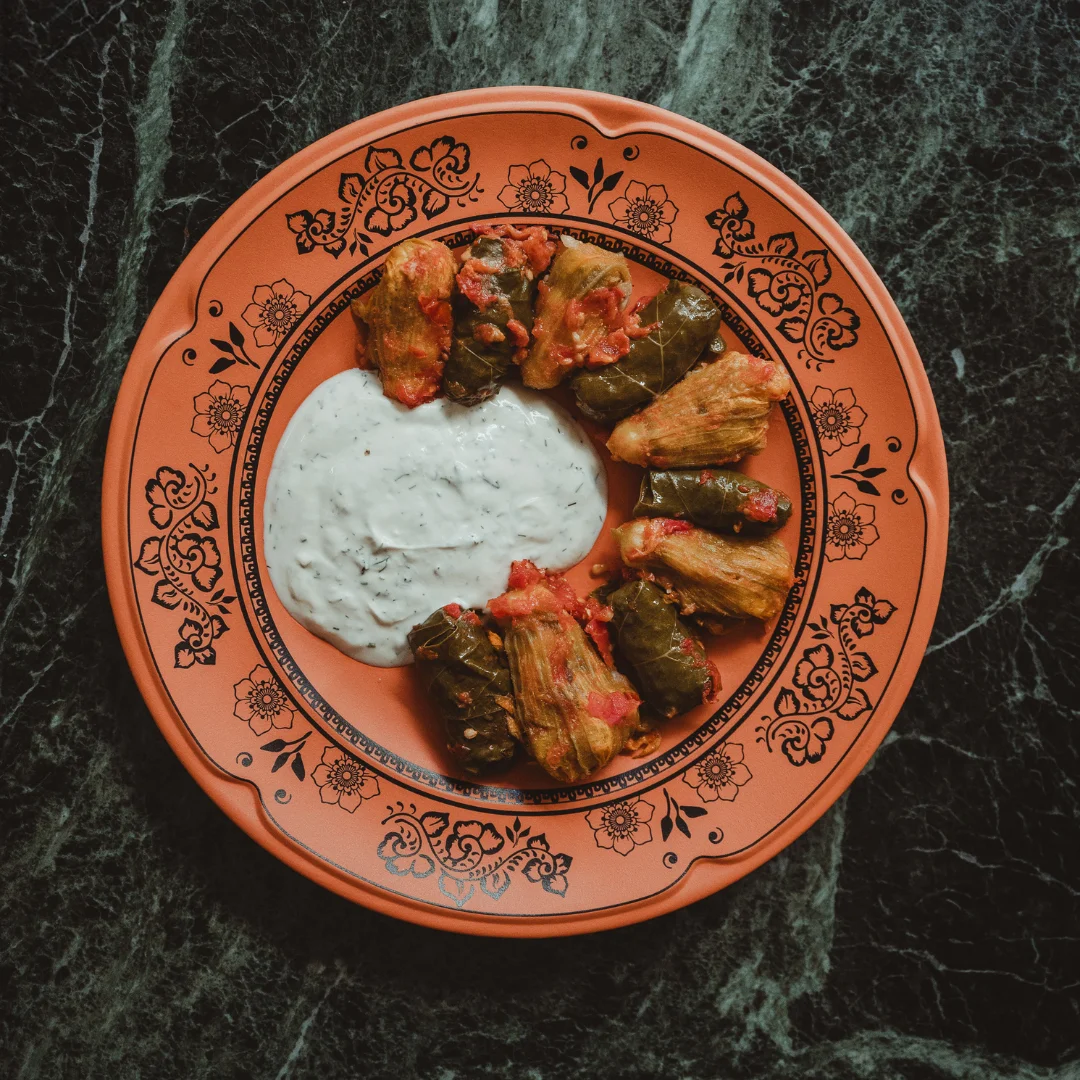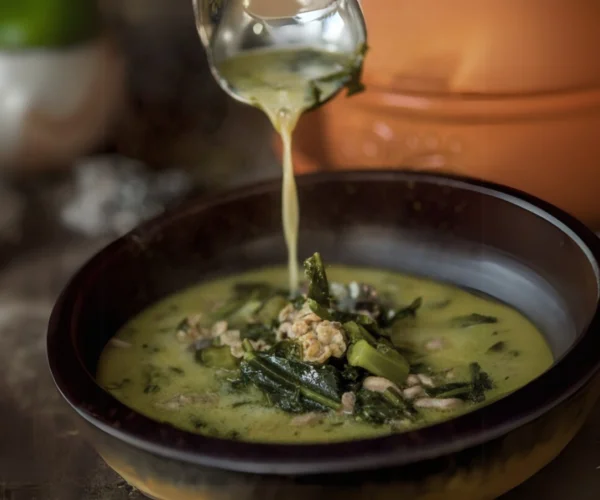From the wrappings of Greek antiquity to St. John the Dolmada of Crete, three millennia of history in one leaf…
A leaf on the plate. Thin, green, measured. Inside, it hides stuffing – coarse wheat (chondros) or rice, vegetables, herbs, maybe some minced meat. A simple dolma.
Or is it?
This tiny bundle of flavour is actually a time capsule that spans three millennia of history. A tangible example of survival through adaptation, a food that has travelled through empires, experienced conquests and adapted to new cultures without losing its essence.
The ancient “Thria”
In ancient Greek cuisine we find “thria”, wrapped dishes in fig leaves containing pieces of meat or dried fruits, vegetables and herbs. The word comes from ‘thrion’, which meant leaf. It was a simple dish, but ingenious in its conception: the ingredients were wrapped in fig leaves, retaining their flavours and juices, turning a few ingredients into a complete juicy meal.
The turning point in the history of this dish occurred when the fig leaf was replaced by the vine leaf. This seemingly simple change acted as a catalyst for its spread, as vine leaves – which were more abundant, more pliable and better for wrapping – were available in every place where viticulture flourished – from the Mediterranean coast to the highlands of the Caucasus.
The journey of wrapped delicacies in the ancient world probably followed multiple routes, like a river branching into many streams. One version suggests that Alexander the Great’s campaigns served as a vehicle for their spread to the East. Another, equally convincing, holds that the thria had already travelled to the coast of Asia Minor and the Pontus centuries earlier, with the waves of the first and second Greek colonization.
These versions complement each other, creating a complex network of diffusion that explains the remarkable phenomenon: similar wrapped dishes appear in distant regions, from Armenia to India, adapted to local tastes and raw materials, but retaining the same basic technique and philosophy.
Thriomageria or Dolmades?
When the Ottomans expanded into the Mediterranean, they came across this ancient delicacy and appropriated it, calling it “dolma” – from the verb dolmak meaning “to fill”. The Ottoman version was adapted to the relevant culinary traditions, with an emphasis on meat and new spices typical of Eastern flavours.
At the same time, the Greeks, especially in Asia Minor, developed their own adapted version. They created the “yalantzi dolmades”, meatless, stuffed with rice, olive oil and herbs, suitable for the fasts of the Orthodox calendar. “Yalantzi” means ‘fake’ in Turkish. A name that conceals a subtle resistance, as during the years of Ottoman rule, the preparation of fasting dolmades became a quiet way of preserving cultural identity through taste.
At the beginning of the 20th century, with the exchange of populations, Greeks from Asia Minor, Pontus and Constantinople brought their recipes and techniques with them to Greece. Thus, the Dolmades came to Greece, closing a millennia-long cycle – a path that reflects the very history of Hellenism: dispersion, transformation, return.
The phenomenon of dolmades reveals a wider game of cultural exchange that unfolded at the Mediterranean table. Gastronomy, as a field less politicized than language or religion, paradoxically became a space where the borders between conquerors and conquered became more fluid. This dialectical relationship is not limited to dolmades. Greek cuisine abounds in dishes with Turkish names that find their roots in the Greek world, as the Ottomans often demanded the use of Turkish names for dishes that they themselves had adopted from local tradition. The mechanisms of this renaming reveal the power relations of the time. Calling a dish by the name of the conqueror was a form of symbolic domination – an attempt to appropriate not only territory but also cultural heritage. However, linguistic dominance did not necessarily mean substantial alteration. ‘Thria’ may have become ‘dolmades’, but the soul of the food remained deeply Greek.
Τhe Cretan “Thriomageria”
The researchers N. and M. Psilaki in their book “Cretan Traditional Cuisine” point out that in Crete, the local cuisine was hardly influenced by the multiple influences it received. This is further confirmed by the fact that a term that testifies to the ancient origin of the dish has survived in the Cretan dialect: ‘Thriomageria’. This word, retaining the root of the ancient ‘thrion’, is a linguistic fossil that bridges millennia. It is an example of unbroken continuity, of the silent transmission of knowledge from generation to generation. A great moment when language, taste and technique maintain continuity with the ancient world. This quiet persistence of culinary tradition is one of the most effective ways of cultural survival – a form of identity preservation that often escapes official historiography but survives on the everyday table. When a grandmother shows her grandchildren how to make ‘thriomagerias’, she transmits much more than a recipe – she transmits a language, a perception, a way of seeing and touching the world.
However, the Cretan thriomageria is not only known for its name, but also as another dish that reveals the local gastronomic wisdom that has always been based on two basic principles: inventiveness and using whatever you can find. The Cretan version of dolmades ignores the formality of a strict recipe and is a living conversation with its environment and its seasons. Cretans make use of every available foliage – from the tender vine leaves of spring and the leaves of lapatha (dock) to the broad leaves of mulberry and fig trees when they are at their best, as well as cabbages and zucchini flowers. The ‘wrapping’ thus becomes a diary of the place, a record of the availability that nature defines. But the filling also transforms seasonally. The spring herbs are combined with artichokes and fresh dill, while as summer progresses, zucchini, eggplants and parsley dominate. In addition, a special feature of the Cretan version is the use of chondros coarsely ground wheat, which replaces some or all of the rice. This choice, born of necessity in times of scarcity, has become a key ingredient that gives the dish its characteristic texture, earthy flavour and multiple nutritional value. Αt certain times, outside the fasting seasons, a handful of xinohondros – cracked wheat simmered in sour milk, then dried, an insert of an older preservation practice, is added.. Dolmades with vine leaves, stuffed zucchini flowers, cabbage dolmades, dolmades with snail, dolmades with lapathophyllas, dolmades with artichokes, are just some of the recipes of Cretan cuisine that reveal the love of the locals for this dish.
“Saint John the Dolmadas”
In Crete, the tradition of dolmades was also closely linked to the religious calendar. Even today on Holy Thursday it is difficult to find a table that does not have dolmades, since according to popular belief, the Virgin Mary prepared this delicacy when she was told of Christ’s martyrdom. Every year, between the dyeing of the eggs and the preparations for the Resurrection, housewives make dolmades, of course without meat because of the fasting, stuffed with rice, artichokes and herbs, a welcome comfort after the oily Holy Wednesday.
More characteristic, however, is the case of Saint John the Theologian, the patron saint of vines, who is celebrated on 8 May. Cretans honour him with a name that reveals his special relationship with this particular food: ‘St John the Dolmadas’. The connection is not accidental, since May is the time when the vine leaves reach their ideal state to become dolmades – large and flexible enough to wrap food, but still very tender and aromatic in taste. Especially in the village of Selli Rethymnon, where there is a church of St. John the Theologian, this connection has become a local identity. On the day of his feast, the villagers used to offer dolmades to pilgrims – a ritual that turned food into a celebration and a social bond, combining the religious with the social element.
Thriomageria in Peskesi
For us at Peskesi, making thriomageria is a culinary act that constitutes a dialogue that spans millennia. We collect vine leaves, zucchini flowers and all kinds of leaves from our organic farm at the moment that nature defines as ideal and fill them with seasonal vegetables, herbs and spices that have been growing in the same soil for centuries. We use chondros that has been milled using traditional methods and we follow hidden in the dolma secrets of village cooks. This is not an exercise in nostalgia, but a dynamic participation in the evolution of a living cultural element. We not only want you to taste our thriomageria, but to understand the story behind it. Every bite is a journey through time, a taste that connects modern Crete with its ancient roots, a reminder of the living tradition that we continue to weave daily in our kitchen.
Food as cultural memory
Dolmadakia in Crete is a dish that accompanies every table. You can find them everywhere: in homes, at spring feasts, in our traditional cafes, taverns and Cretan restaurants. It is the dish that even if one does not order it, it will always find its way to the table, even through a gesture of hospitality that tells the soul of the place.
So the next time you find a dolma on your plate, it’s worth looking at it carefully. Notice how the leaf embraces the filling. Consider the hands that have performed this movement – from the cooks of ancient Athens, to households under Ottoman rule and the refugees of Asia Minor. Listen to the voices that have described this dish – from the writings of Athenaeus to Cretan villages.
A dolma is an example of how a culture survives by adapting but retaining its essence. It is a reminder that the foods we eat every day are not just material goods – they are carriers of memory, identity, narrative. They are the taste of our history.
